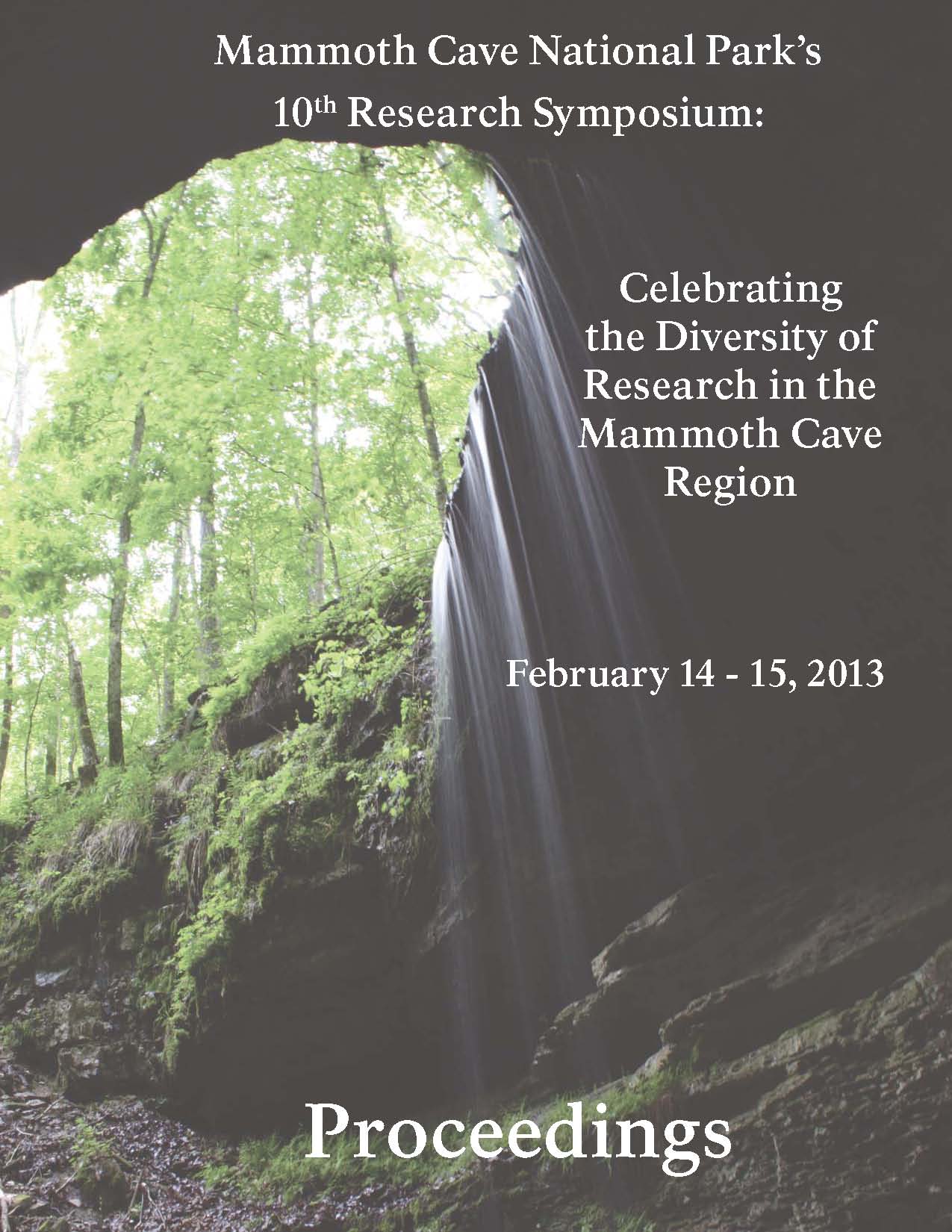Event Title
Seasonal Occurrence and Habitat Affi liations of Trichoptera at Mammoth Cave National Park
Start Date
14-2-2013 2:50 PM
Description
The order Trichoptera is an ecologically-important, diverse group of insects. We investigated the relative abundance and occurrence of these insects at Mammoth Cave National Park (MCNP). We focused our efforts on adults captured at blacklight traps placed across four forest habitats in MCNP on 14 nights during 2010-2011. Large-bodied Trichoptera (≥ 10 mm in length) were identified and enumerated, yielding 2,153 specimens of ≥ 45 species and 11 families. Unique captures were recorded at mixed deciduous-dominated, mixed coniferdominated, and upland deciduous sites (13, 4, and 3 species, respectively). While composition of the assemblage varied across collection sites, as well as seasonally, members of the Hydropsychidae (Hydropsyche spp.) and Leptoceridae (Ceraclea spp.) were the most abundant groups. These two families constituted 93% of total abundance and 65% of species richness across all samples. In this study we detail abundance and richness patterns of Trichoptera across a forest landscape and examine habitats for which data are lacking.
Recommended Citation
Dodd, Luke E.; Floyd, Michael A.; and Etnier, David A., "Seasonal Occurrence and Habitat Affi liations of Trichoptera at Mammoth Cave National Park" (2013). Mammoth Cave Research Symposia. 8.
https://digitalcommons.wku.edu/mc_reserch_symp/10th_Research_Symposium_2013/Research_Posters/8
Included in
Animal Sciences Commons, Forest Sciences Commons, Geology Commons, Hydrology Commons, Other Earth Sciences Commons, Plant Sciences Commons
Seasonal Occurrence and Habitat Affi liations of Trichoptera at Mammoth Cave National Park
The order Trichoptera is an ecologically-important, diverse group of insects. We investigated the relative abundance and occurrence of these insects at Mammoth Cave National Park (MCNP). We focused our efforts on adults captured at blacklight traps placed across four forest habitats in MCNP on 14 nights during 2010-2011. Large-bodied Trichoptera (≥ 10 mm in length) were identified and enumerated, yielding 2,153 specimens of ≥ 45 species and 11 families. Unique captures were recorded at mixed deciduous-dominated, mixed coniferdominated, and upland deciduous sites (13, 4, and 3 species, respectively). While composition of the assemblage varied across collection sites, as well as seasonally, members of the Hydropsychidae (Hydropsyche spp.) and Leptoceridae (Ceraclea spp.) were the most abundant groups. These two families constituted 93% of total abundance and 65% of species richness across all samples. In this study we detail abundance and richness patterns of Trichoptera across a forest landscape and examine habitats for which data are lacking.

